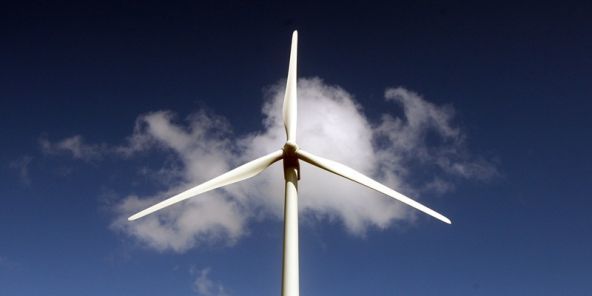Hotly contested windfarm proposals by St Andrews University are being recommended for refusal by Fife Council planners.
The institution which believes it will have a better chance of a fair hearing by going to the Scottish Government hopes to become the first university in the country to generate all its own energy through wind power by erecting six 330ft turbines at Kenly Farm, near Boarhills.
However, with the application due for consideration at Fife Council’s North East Fife Area Committee in Cupar on Wednesday, Fife Council planners are recommending that it should be rejected. They say:
* The proposed development would have a detrimental impact on the landscape character, local communities, the skyline and overall appearance of the immediate and surrounding area by virtue of its scale, size, number of turbines and prominent location, and as such would have an over-dominant visual impact which would not be compatible with its rural landscape setting. It would also detract from the visual amenity of the adjacent Area of Great Landscape Value.
* The proposed development by virtue of its scale, size, number of turbines, prominent location and its close proximity to the adjacent proposed wind turbines at Lingo Farm would have a detrimental cumulative visual impact on the landscape character, local communities, the skyline and the overall appearance of the immediate and surrounding rural landscape setting.
* The applicant has failed to submit sufficient information to allow an assessment of the visual impact of the connection of the proposed turbines to the national grid, which would be required to allow the successful implementation of the proposal and this connection is likely to exacerbate the unacceptable visual impacts of the development, contrary to guidance.
Fife Council planner Sharon Dorward says in her report: ”It has been demonstrated that this development would be able to comply with the development plan and other national and council guidance with regards to a number of material planning considerations, such as residential amenity, hydrological, ecological, road safety, access, and infrastructural requirements etc. However, in terms of meeting the landscape and visual impact requirements, the scale of the proposals is such that it would be visible and would significantly alter the landscape character in close proximity to an Area of Great Landscape Value and proposed Special Landscape Area. Further to this, the proposal would create significant detrimental visual impact on historic settlements in the area. And these would potentially be amplified when combined with other approved smaller turbines and prospective large turbine schemes currently under construction.
”While the proposal would assist in meeting the overall Scottish Government energy targets given the significant shift in energy production objectives towards renewable resources, this does not outweigh the issues identified.”
Earlier this month, St Andrews University criticised Fife Council’s handling of its windfarm proposals and said it has a better chance of a fair hearing by going to the Scottish Government.
Voicing its disappointment that the deadline for issuing or declining planning consent had been missed, even after allowing five time extensions, the university has appealed to the Government.
It will now be up to a Government-appointed reporter to decide whether or not the multi-million pound windfarm, which has attracted hundreds of objections but also considerable support, can be built.
The council was also accused of failing to read the university’s environment statement timeously, as last October it requested information Mr Quinn said was already in the document.
The windfarm is a key part of the of the university’s drive to reduce its carbon footprint and its annual power bill of £5.4 million, part of which is generated by energy-intensive, world-class research at the North Haugh.
Kenly Farm, six miles from St Andrews, is owned by the university.
